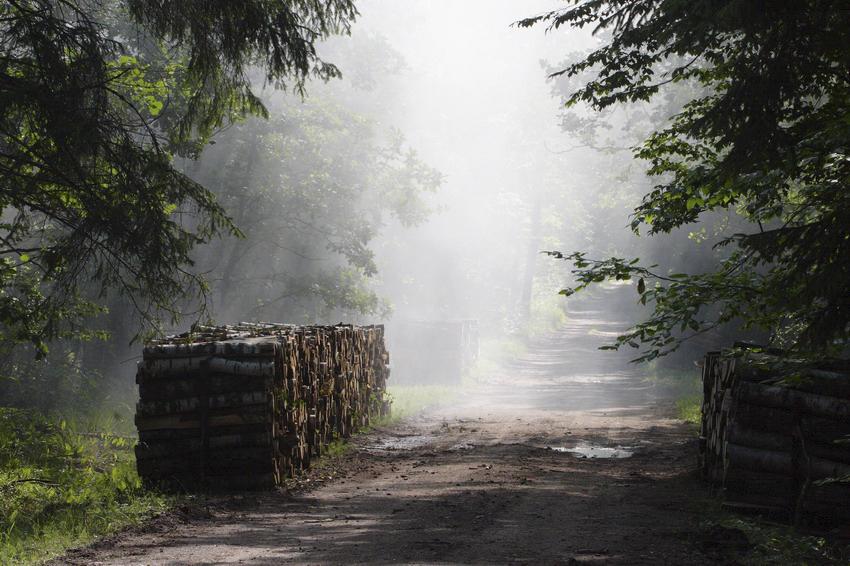The State Forests National Forest Holding
The State Forests National Forest Holding is the largest organisation in the European Union managing forests, which belong to the State Treasury and celebrating its 90 anniversary this year.
Presently, we manage the area of one third of Poland's territory. Not long after the end of the Second World War, there was only 21 % of the area. Every year we plant 500 million of new trees, as we want Polish forests grow all the time.
Every year Polish foresters plant 500 million of trees.
85 % of nature reserves in Poland are located within the State Forests. 40 % of the forests managed by General Directorate of the State Forests are protected within the framework of European network Natura 2000. We fight against many threats: natural disasters, plaques of insects, trees' diseases, fires, pollutions, as well as poaching and vandalism.
We take care the forestry supplying the market with timber, as ecological and universal material, to be carried on in accordance with rules of balanced development (photography P.Fabjański).
One of our major tasks is making forests accessible to the society. We invite you to take advantage of these beautifully located within the forest wilderness holiday resorts, forester's lodges or guest rooms. That is for you, we create thousand kilometres of hiking trails, cycling paths or camping sites. All the above mentioned, you can find in service www.czaswlas.pl.
We also take care the forestry supplying the market with timber, as ecological and universal material, to be carried on in accordance with rules of balanced development. We obtain over 30 million of cubic meters of wood annually, twice as much as at the beginning of the nineties of the XX century.
Despite of this, the average of wood abundance per hectare of our forests is one fourth bigger than 20 years ago and 40% bigger than the average of European Union currently amounts.
In Poland in sectors connected with the forestry, there work about 375 thousand of people. It means that each 40 working Pole works in the forest.
In Poland in sectors connected with the forestry, there work about 375 thousand of people. It means that each 40 working Pole works in the forest. The sector of wood processing works out approximately 8 % of our GDP (Gross Domestic Product). Among others, thanks to the timber from the State Forests Poland is the 10 largest producer of furniture in the world, and the 4 largest furniture exporter.
The State Forests employ 25 thousand people. That way we are the 9 biggest employer in Poland. Among the largest companies in our country it takes 22 place in respect of its incomes and 11 place in respect of its profits. The value of assets, we manage, reaches 300 million zl. If we add social values, it will be worth one billion zlotych. We do not use money from the budget, but we earn money on our own to support the business. In spite of the financial crisis, since 2002, we continuously note down profits. Moreover, we pay taxes amounting 1,3 billion zl annually.
87 % of Poles think, the foresters are competent. We willingly share our knowledge of Polish forests, of their history and of nature values with the others. We publish books, periodicals, brochures; we also administer the website www.lasy.gov.pl . For children, the youth and teachers, we prepared internet service "E-lynx' Lynx Forest" (www.erys.pl). Our staff has supported schools in field of nature education for years. We also organise many actions to let people broaden their knowledge about forest, nature and ecology.
 Asset Publisher
Asset Publisher
 Asset Publisher
Asset Publisher
Użytkowanie lasu
Użytkowanie lasu
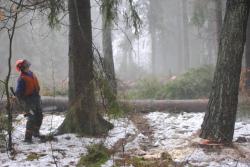 Ścinka drzewa (zdjęcie: Jerzy Wolski)
Ścinka drzewa (zdjęcie: Jerzy Wolski)
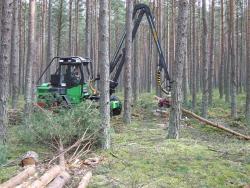 Pozyskanie drewna harwesterem (zdjęcie: M. Leszczyński)
Pozyskanie drewna harwesterem (zdjęcie: M. Leszczyński)
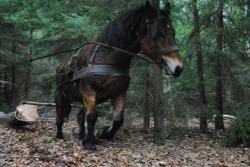 Zrywka konna drewna (zdjęcie: Jerzy Wolski)
Zrywka konna drewna (zdjęcie: Jerzy Wolski)
 Okrzesywanie drzewa (zdjęcie: Jerzy Wolski)
Okrzesywanie drzewa (zdjęcie: Jerzy Wolski)
 Załadunek drewna (zdjęcie: Dala Pieczulis-Leszczyńska)
Załadunek drewna (zdjęcie: Dala Pieczulis-Leszczyńska)
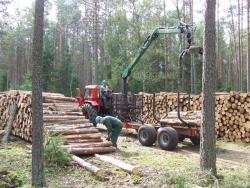 Zrywka drewna (zdjęcie: M. Leszczyński)
Zrywka drewna (zdjęcie: M. Leszczyński)
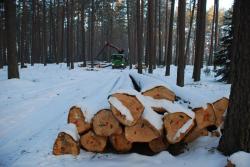 Drewno przygotowane do wywozu (zdjęcie: Dala Pieczulis-Leszczyńska)
Drewno przygotowane do wywozu (zdjęcie: Dala Pieczulis-Leszczyńska)
Użytkowanie lasu to korzystanie z jego zasobów – pozyskanie drewna, zbiór płodów runa leśnego, zbiór roślin lub ich części na potrzeby przemysłu farmaceutycznego, pozyskanie choinek, eksploatacja kopalin i wiele innych. Leśnicy umożliwiają społeczeństwu korzystanie z darów lasu, ale w sposób zapewniający mu trwałość.
Rozmiar pozyskania drewna określony jest w planie urządzenia lasu, który sporządzany jest dla każdego nadleśnictwa na 10 lat. Zapewnia on pozyskiwanie drewna w granicach nie tylko nieprzekraczających możliwości produkcyjnych lasu, lecz także systematycznie zwiększających zapas drewna pozostającego w lasach, tzw. zapas na pniu. Krótko mówiąc, leśnicy prowadzą w lasach gospodarkę w sposób zapewniający ich trwałość i możliwość biologicznego odtwarzania.
O wielkości pozyskania drewna decyduje tzw. etat cięć określony w każdym planie urządzenia lasu. Jest to ilość drewna możliwa do wycięcia w określonych drzewostanach na określonej powierzchni w okresie 10 lat, które obejmuje plan. Dzięki temu, że etat jest niższy niż przyrost drewna w tym samym okresie, następuje stały wzrost zapasu „drewna na pniu" (w Polsce pozyskuje się ok. 55 proc. przyrostu).
Pozyskane drewno pochodzi z:
- cięć rębnych – usuwania z lasu drzewostanów „dojrzałych"; ich podstawowym celem jest przebudowa i odtworzenie drzewostanów;
- cięć pielęgnacyjnych (czyszczeń i trzebieży) – usuwania z lasu części drzew uznanych za niepożądane i szkodliwe dla pozostałych drzew i wartościowych elementów drzewostanu;
- cięć niezaplanowanych – są one konsekwencją wystąpienia klęsk żywiołowych w lasach.
Nadleśnictwo Rytel prowadzi gospodarkę leśną na powierzchni ponad 17,5 tys. ha i pozyskuje rocznie ok. 70 tys. m sześc. drewna.
Drewno pozyskane na terenie Nadleśnictwa Rytel trafia głównie do przedsiębiorstw zajmujących się dalszym przerobem tego surowca: tartaków, zakładów przemysłu celulozowo-papierniczego, fabryk mebli oraz mniejszych zakłady stolarskich. Ponadto drewno opałowe kupowane jest przez nabywców indywidualnych na potrzeby gospodarstw domowych.
Zapoznaj się z ofertą sprzedaży drewna Nadleśnictwa Rytel.


 fot. Paweł Fabijański
fot. Paweł Fabijański
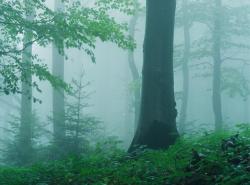 fot. Paweł Fabijański
fot. Paweł Fabijański
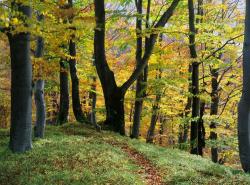 fot. Paweł Fabijański
fot. Paweł Fabijański
